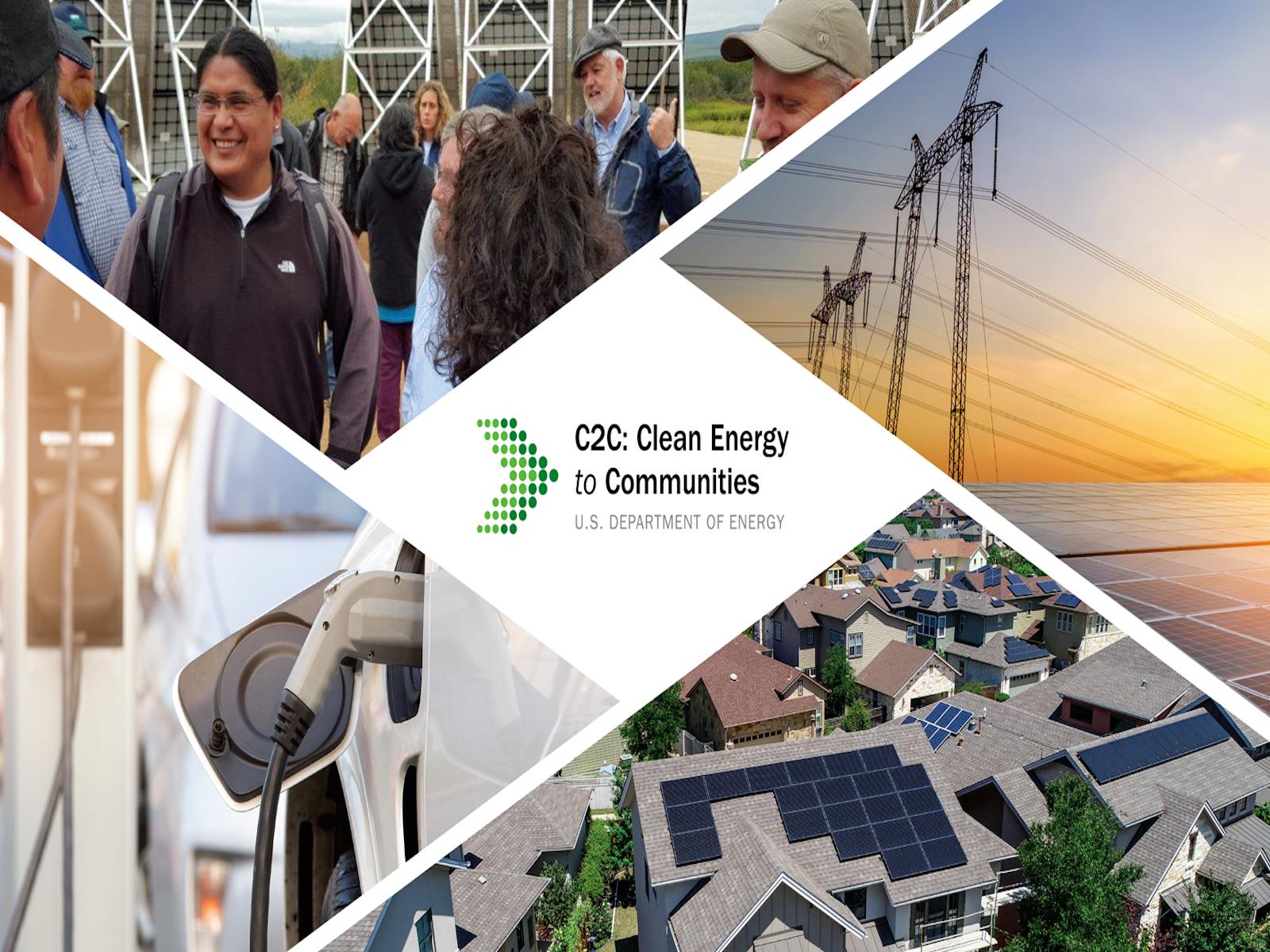PNNL to Support Sitka’s Clean Energy Transition Through DOE-Funded Project

The U.S. Department of Energy's Clean Energy to Communities (C2C) program connects communities with energy experts.
(Image: U.S. Department of Energy)
Pacific Northwest National Laboratory (PNNL) will lead support to one of six community teams chosen today by the U.S. Department of Energy (DOE) to receive a total of up to $25 million through the Clean Energy to Communities (C2C) program. During the three-year in-depth technical partnership, PNNL will be working with the community team representing Sitka, Alaska, helping the city optimize its hydropower infrastructure and advance solar, wind, and energy storage projects. Sitka’s team includes the City and Borough of Sitka, City and Borough of Sitka Electric, the Renewable Energy Alaska Project, and Mt. Edgecumbe High School.
Through the partnership, PNNL will share its technical expertise around grid optimization and integration of clean energy resources. One area of interest for Sitka is renewably powered production of ammonia, which could be used to replace diesel—a common fuel for powering microgrids and providing heating in remote northern communities like Sitka. PNNL and the National Renewable Energy Laboratory will work with the community team to explore the potential for ammonia production amid Sitka’s growing energy needs and planned clean energy installations.
PNNL will also support community engagement activities in Sitka, working with the community team to gather input and feedback, build understanding about clean energy technologies and their benefits, and provide educational information to help the community make informed decisions.
“We look forward to working hand-in-hand with the community of Sitka to help them define how they want their energy future to look,” said Molly Grear, a PNNL environmental engineer who will be supporting the Sitka community team as part of the C2C in-depth partnership program. “Just as important, we will help them gather the right information from experts at PNNL to chart a path for achieving those goals through listening and learning from the community.”
This new project expands PNNL’s ongoing energy collaboration with Sitka—the lab is already working with the city through the DOE Energy Technology Innovation Partnership Project (ETIPP), which helps build energy resilience in remote communities. Through ETIPP, PNNL and Sitka worked together to develop a model of the local grid and to assess solar, wind, and ocean energy potential, among other outcomes.
PNNL’s support of the C2C program extends beyond the in-depth technical partnerships announced today to include peer-learning cohorts and expert match engagements that are helping hundreds of communities advance their clean energy transitions.
“The Biden-Harris Administration is committed to ensuring the benefits of our clean energy future reach every American—whether they’re in urban centers or America’s rural heartland,” said U.S. Secretary of Energy Jennifer M. Granholm in the DOE announcement today. “By connecting communities with innovative tools and know-how from our world-renowned national laboratories, DOE is laying the foundation for the partnerships needed to help transform local clean energy goals and ambitions into reality.”
Alongside Sitka, the funding will support community teams and projects in Chicago, IL; Colorado Springs, CO; Delaware Valley, PA and NJ; Molokai, HI; and Pittsburgh, PA. To learn more, read the DOE announcement.
Published: September 14, 2023